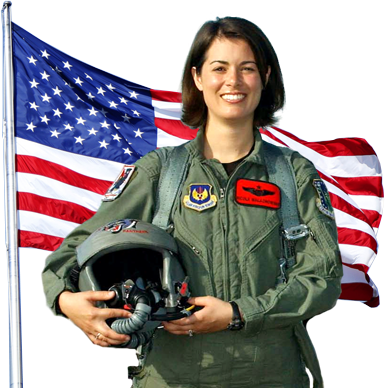- Details
- Hits: 1300
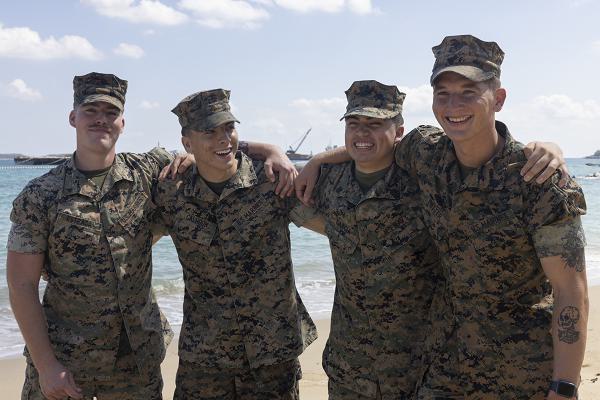
Okinawa, Japan. (October 17, 2024): When a Japanese civilian was injured in a car crash, little did he know he would be treated by U.S. Marines. In this photo by Lance Corporal Nevaeh Segura, these heroes are pictured from the left, Lance Corporal Stephen Estrada, Lance Corporal Samuel Calhoun, Corporal Austin Potter, and Navy Petty Officer 3rd Class Jett Garcia. The troops responded and rendered first aid to a Japanese resident following a brutal car crash on the Okinawa Expressway.
The troops were on their way back to their base at Camp Swab in a taxi when they came upon a truck whose front end was crushed and a citizen was trapped inside. The service members quickly assessed the situation and the team tried to free the trapped driver with a shovel. That being unsuccessful, the Marines resorted to breaking the window to pull him to safety.
After checking the driver’s condition and ensuring he was stabilized, Estrada and Garcia moved the driver away from the vehicle to a safer area until paramedics arrived. The victim was taken to a nearby hospital in stable condition. The Marine’s quick action is credited with saving the man’s life and this was possible due to their combat care training.
Every Marine and Sailor undergoes what is officially called Tactical Combat Casualty Care (TCCC), a set of guidelines for pre-hospital trauma treatment on the battlefield. The course teaches Marines and Sailors how to provide life-sustainment care similar to what a Navy Corpsman would administer until the causality can be treated by a medical professional.
- Details
- Hits: 1762
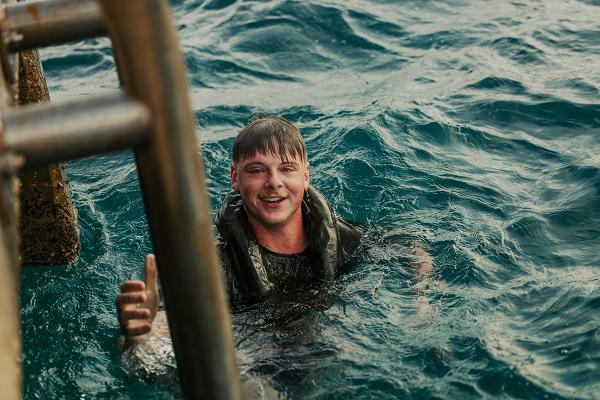
Aruba. (October 21, 2024): Crystal clear waters, blue skies, and gentle breezes greeted U.S. Marines as they travelled to this exotic island for Tres Kolos 24. In this photo by Corporal Antonino Mazzamuto, Corporal Timothy Phelps Jr., an infantry rifleman with 2d Marine Division, smiles broadly after completing a 200-meter swim test. The Americans joined their colleagues, the Royal Netherlands Marine Corps, to conduct a series of small-unit training sessions on this island that is part of the Kingdom of the Netherlands.
Aruba was claimed by Spain in 1499 and the island quickly became a hotbed of smuggling and piracy in the Caribbean. The island's earliest inhabitants were Arawak Indians who left behind red cave drawings, clay pottery, and stone tools. In 1636, Aruba was seized by the Netherlands and was occupied by the Dutch West India Company.
Today, the Dutch government controls defense and foreign affairs while the island's government manages local matters such as local ordinances, civic policies, and the management of currency. As a NATO ally, Americans do not need to obtain a visa to visit this little chunk of paradise.
- Details
- Hits: 1715
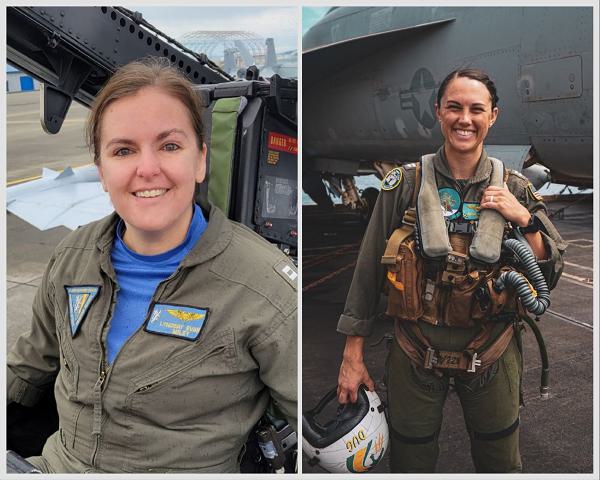
Whidbey Island, Washington. (October 22, 2024): The Navy is mourning the loss of two veteran pilots, both age 31 and from California, who were killed in crash east of Mount Rainier. The undated file photo above portrays Lieutenant Commander Lyndsay P. Evans, a Naval Flight Officer, and Lieutenant Serena N. Wileman, a Naval Aviator, who died when their EA-18G Growler jet from the Electronic Attack Squadron, known as “Zappers,” crashed during a training flight.
Due to poor weather conditions and difficult terrain, it took rescue crews three days to reach the crash site. The wreckage was found in a steep, heavily wooded area six thousand feet east of Rainier.
The pilots had just returned from a Middle East deployment where they took part in air strikes against the Houthis in Yemen. They were deployed aboard the USS Dwight D. Eisenhower as part of Electronic Attack Squadron 130. They spent nine months at sea as a part of Carrier Air Wing Three conducting numerous bombing missions.
Evans, callsign “Milley,” was recently awarded Single Action Air Medals for a sweeping set of strikes against Houthi-controlled areas of Yemen. Evans was named the Growler Tactics Instructor of the Year for 2024.
Wileman, callsign “Dug,” was also awarded Air Medals for her role in combat missions conducted between last December and March. Wileman was commissioned in 2018 and joined the Zapper squadron on Washington state's Whidbey Island in 2021. She earned the National Defense Service Medal, Navy Unit Commendation Medal, and a Combat Action Ribbon.
- Details
- Hits: 1195
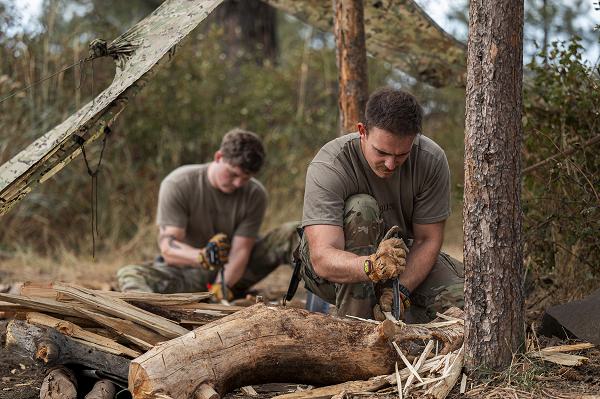
Fairchild Air Force Base, Washington. (October 17, 2024): Since World War II, American air crews have been captured, brutalized, and exploited by our enemies. In this photo by Senior Airman Tiffany Del Oso, Airman 1st Class Joe Trybus and Airman 1st Class Benathan Deman participate in Survival Escape and Evasion (SERE) training conducted by the Air Force’s 66th Training Squadron. In this phase of their training, SERE students are taught techniques to adapt to their surroundings to survive. This is the “evasion” part.
What is expected of an American warfighter if captured? This is the resistance part, and by far the most difficult both physically and emotionally. The need for escape and evasion training has its origins in the number of allied pilots downed over the skies of Germany. The training has been expanded in recent years due to the extreme mistreatment of POWs by our adversaries. During the Korean War, enemy prisoners were beaten and publicly displayed for propaganda purposes. In Vietnam’s infamous Hanoi Hilton prison, GI’s were subject to years of torture, starvation, and degradation.
- Details
- Hits: 1332
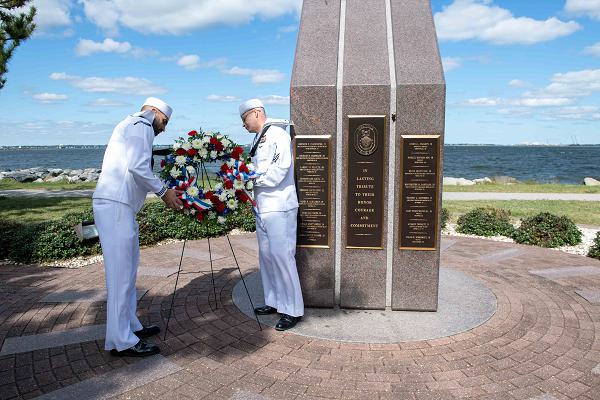
Norfolk, Virginia. (October 10, 2024): It has been twenty-four years since terrorists attacked the USS Cole, killing seventeen Sailors and wounding dozens of her crew, and the pain has not subsided. In this photo by MC1 Sophie A. Pinkham, Logistics Specialist 2nd Class Wilfredo Cerezo-Rodriguez and Logistics Specialist 1st Class Robert Jordan lay a wreath commemorating the victims at the USS Cole Memorial.
On October 12, 2000, al-Qaeda terrorists detonated a bomb alongside the USS Cole while it was refueling in Aden Harbor, Yemen. Two men pulled up alongside the vessel in a motorboat, reportedly making friendly gestures to the American warship. They then detonated 1,000 pounds of explosives. The blast killed seventeen and injured thirty-nine crew members and created 40-foot hole in the side of the ship. The crew fought valiantly for more than 96 hours to rescue their shipmates and save their ship under extremely dangerous conditions.
- Details
- Hits: 2004

Andaman Sea. (October 12, 2024): A warship is like a living being, its key parts must be ready to spring to life in an emergency. In this photo by MC1Greg Johnson, Operations Specialist 1st Class Ruchel Papa, from Los Angeles, stands watch in the combat information center during a General Quarters drill aboard the Arleigh Burke-class guided-missile destroyer USS Dewey. General Quarters is a ship-wide signal that all hands (everyone available) aboard must go to battle stations (the positions they are to assume when the vessel is in combat) as quickly as possible. The emergency could be enemy sightings but the command is also used to summon the crew during storms or even fog.
The order traces its roots to the British Navy phrase 'beat to quarters' which indicated a particular kind of drum roll that ordered sailors to their posts. In preparing for a fight, some would load and prepare to fire the ship's guns while others would ascend the rigging as sharpshooters. During general quarters, crew members would remain at their battle stations with their guns and ammunition ready for immediate use.


